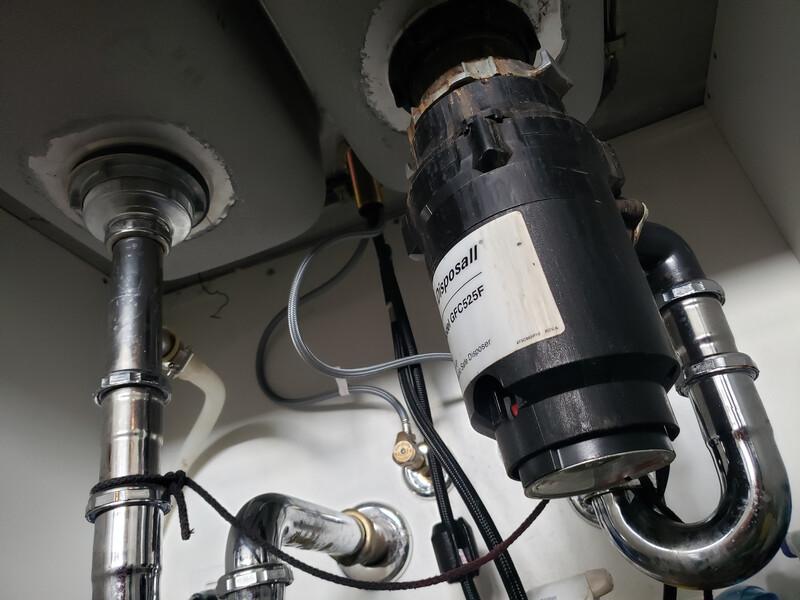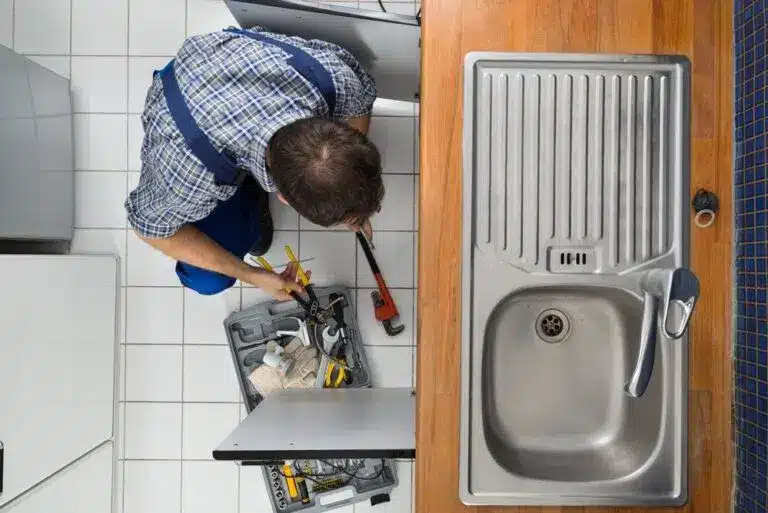Speedy Solutions for Fixing a Dripping Waste Disposal Unit
Speedy Solutions for Fixing a Dripping Waste Disposal Unit
Blog Article
They are making a number of good annotation on the subject of Tips on Fixing a Leaking Garbage Disposal in general in this great article following next.

Waste disposal unit are crucial kitchen area home appliances that assist in taking care of food waste successfully. Nevertheless, a dripping waste disposal unit can be a discouraging and untidy problem to deal with. The good news is, lots of leakages can be fixed easily with a few easy actions. In this article, we will go over exactly how to deal with a leaking garbage disposal properly.
Intro
Waste disposal unit are set up under kitchen area sinks and are created to shred food waste into smaller items, allowing it to go through the plumbing system conveniently. While these tools are usually reliable, leakages can happen gradually as a result of deterioration, loose links, or damage to the system.
Step-by-Step Overview to Repairing a Leaking Waste Disposal Unit
Switch off the Power
Prior to attempting any repair work, make sure that the power to the garbage disposal device is switched off to prevent the threat of electrical shock.
Find the Leakage
Determine the exact area of the leakage and identify the reason
Tighten Connections
Use a wrench to tighten any kind of loosened connections between the disposal device and the plumbing system.
Replace Seals or Gaskets
If the leak results from worn seals or gaskets, remove the old parts and replace them with new ones.
Patching Splits or Holes
For fractures or openings in the disposal system, use epoxy or an ideal patching product to secure the damaged location.
Determining the Source of the Leakage
Prior to attempting to deal with a leaking waste disposal unit, it is necessary to determine the resource of the leakage. This can typically be done through aesthetic assessment or by conducting straightforward examinations.
Visual Examination
Inspect the waste disposal unit device thoroughly for any indications of water leakage. Pay very close attention to areas around seals, gaskets, and connection factors.
Testing for Leaks
One way to check for leakages is by running water via the disposal unit and checking for any type of visible indicators of leakage.
Common Causes of Leakages in Garbage Disposals
Worn Seals and Gaskets
Seals and gaskets play a critical role in stopping water from leaking out of the garbage disposal. Gradually, these parts can deteriorate, causing leaks around the disposal device.
Loose Links
The connections between the garbage disposal and the plumbing system can end up being loosened in time, causing water to leak out throughout operation.
Cracks or Openings in the Disposal System
Physical damage to the waste disposal unit, such as cracks or openings in the housing, can additionally lead to leakages.
Devices and Products Needed for Repairing a Dripping Garbage Disposal
Prior to starting the repair service process, gather the essential tools and products, including a screwdriver, flexible wrench, plumber's putty, replacement seals or gaskets, and epoxy or patching material for repairing cracks or openings.
Checking the Waste Disposal Unit After Repair Service
When the fixing is full, examine the waste disposal unit by running water via it to make sure that the leakage has been fixed.
Preventive Upkeep Tips to Stay Clear Of Future Leaks
To prevent future leakages, it is essential to execute regular upkeep on your garbage disposal. This includes maintaining it clean, avoiding placing non-food items or hard things down the disposal, and occasionally checking for leaks or various other issues.
Final thought
In conclusion, dealing with a dripping waste disposal unit is a fairly straightforward process that can be finished with basic devices and materials. By adhering to the steps detailed in this short article and practicing preventative maintenance, you can maintain your waste disposal unit in good working problem and avoid expensive repair services in the future.
HERE’S HOW TO FIX YOUR GARBAGE DISPOSAL
WHAT TO DO IF SOMETHING IS STUCK IN YOUR GARBAGE DISPOSAL
If the impeller won’t turn, there’s probably something stuck in the disposal. It could be a steak bone or peach pit, although plumbers report pulling all sorts of inappropriate objects out of disposals, such as bottle caps or aluminum foil. Make sure power to the disposal is off, and look inside to see if you can see the source of the jam.
Never stick your fingers in a disposal. Pull out anything you see with tongs or pliers.
If the disposal still won’t work, it may be time to call a plumber or consider buying a new disposal. GEM Plumbing & Heating is here for all of your garbage disposal needs.
WHAT TO DO IF YOUR GARBAGE DISPOSAL DRAIN IS CLOGGED
Take everything out from underneath your sink and put a bucket or other container under your disposal to catch any water that drains out. Disconnect your disposal from the power supply. If it’s plugged into a wall outlet, unplug it. If it’s hardwired into an electrical box, go to the electrical panel and turn off the breaker for the disposal. Pour ¼ cup of baking soda into the drain, followed by ½ cup of white vinegar. Give the solution a few minutes to fizz and do its work. Look into the disposal with a flashlight to see if you can see an object that might be causing the clog. If you see it, remove it using tongs or pliers. MORE TIPS ON DEALING WITH A CLOGGED GARBAGE DISPOSAL
Never use drain cleaner in a garbage disposal. It can damage the plastic parts inside the disposal. You can also be splashed with the caustic liquid while working to clear the clog. Beware! Never stick your fingers into a garbage disposal. Trust us — not a good idea. In many instances, your dishwasher drains through your garbage disposal. This allows the disposal to grind any large food particles that may be drained out of your dishwasher. There are some jurisdictions, however, where the plumbing code prohibits such a connection. WHAT TO DO WHEN YOUR DISHWASHER DRAINS THROUGH THE DISPOSAL
Run some water in the sink so your plunger has at least a ½-inch of water to create a seal and plunge vigorously up and down several times. You may need to repeat this several times. Run hot water down the drain to clear any residue that remains.

I recently found that piece about Why Is when doing a search on the web. Sharing is caring. Who knows, you will be doing someone a favor. Many thanks for your time spent reading it.
Book Appointment Report this page